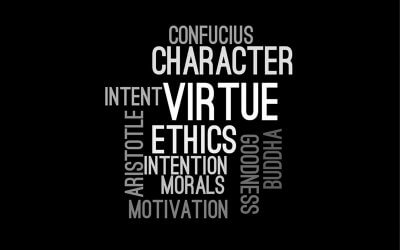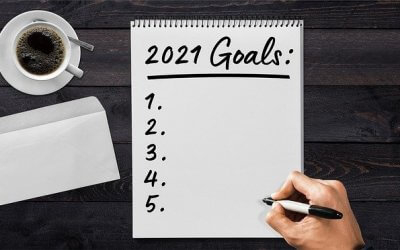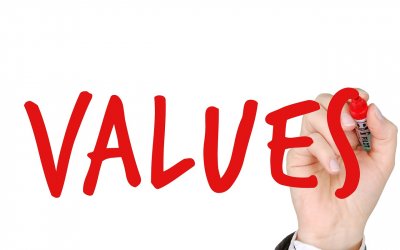Discover how understanding the limitations of averages and embracing probabilistic thinking can improve decision-making and risk management in business.

Resolutions, Here We Go Again.
Reflecting on 2021 Resolutions: A Personal Scorecard and Adjustments for 2022
Last year, I shared my New Year’s resolutions and the process I used to create them in a blog post titled “New Year’s Resolutions, Once More Unto the Breach.” I divided my resolutions into three categories: Business, Personal, and Relationships. Upon reflecting on my progress, I scored myself on a scale of 0 to 10 in each area:
- Business: 5.65
- Personal: 4.60
- Relationships: 8.20
While my performance was not perfect, I still made some progress. I realized my long-term goals, or 3HAG, remained mostly unchanged, which meant my resolutions were still relevant for 2022.
Enhancing Resolution Success in 2022
To improve my success rate in 2022, I decided to implement the advice of social psychologist Wendy Wood, who emphasized the importance of tapping into the unconscious mind to facilitate change. Wendy, an expert on habits and the author of “Good Habits, Bad Habits: The Science of Making Positive Changes That Stick,” suggests that resolution success is less about willpower and more about persistence. She advises minimizing friction that prevents achieving goals and increasing friction for actions that hinder success.
Addressing Friction in Failed Resolutions
To illustrate how I applied Wendy’s approach, let’s examine three resolutions I struggled with last year and discuss how I can modify friction to increase the likelihood of success.
Have five coaching clients on annual contracts.
I fell short of this goal, but I did have several clients on shorter-term contracts. I discovered that my mindset was focused on selling annual contracts rather than addressing clients’ immediate needs, which led to positive outcomes and repeat business.
- Friction to reduce: Shift my mindset from selling annual contracts to addressing clients’ problems.
- Friction to increase: Develop a questionnaire to identify prospects’ most significant issues before proposing a solution or relationship.
Practice yoga three times a week.
I only practiced yoga three times throughout the year, which I attributed to insufficient time allocation.
- Friction to reduce: Schedule yoga sessions in my calendar every Sunday for the week ahead, allowing for an hour and twenty minutes for each session and a shower afterward.
- Friction to increase: Share my commitment and calendar with a friend to hold me accountable.
Develop a monthly calling plan for “old” friends.
My performance in this area was mediocre. I often forgot to call friends, so I needed to address the friction points.
- Friction to reduce: Schedule a weekly calendar appointment to call a friend, including their name and phone number.
- Friction to increase: Reach out on social media to inform friends about my intention to call and leave messages when they don’t answer, inviting them to call back.
I look forward to updating you on my progress next year and encourage you to examine your 2022 goals by considering how adjusting friction can help you achieve them. Feel free to share your resolutions with me if you’d like someone to hold you accountable or reach out if you’d like to discuss this further.
Copyright (c) 2022, Marc A. Borrelli
Recent Posts
The “Flaw of Averages” Causes Havoc for Businesses
What is Your Strategy, In a Sentence?
If you are banking on the vaccine returning us all to “normal” quite quickly, in the famous words of Dr. Akande, “Hope is not a strategy.” Your organization should be preparing a well-defined strategy for 2021 and beyond. Once you have this strategy, the ultimate question: can you clearly articulate it in one sentence? Distilling your strategy into a single sentence is a powerful tool, both for your legacy and your team effectiveness. Not sure where to start? I offer a plug-in formula to set up your strategy sentence.
Character Matters
“It’s easier to hold to your principles 100% of the time than it is to hold to them 98% of the time.” — Clayton Christiansen. I have often written about the importance of a company’s Core Values. That’s because no matter what words you may have chosen as values, your organization’s Core Values are on display in how leadership and employees actually behave. As I’ve said before, how you have acted in the last twelve months will define your career for the next decade. Your character, and your company’s character, matters.
New Year’s Resolutions, Once More Unto the Breach
The holidays have been even quieter than normal, which has given me plenty of time to reflect on my New Year’s resolutions. Looking at 2021, I decided to use a completely new approach to lay out my goals. The result of my new approach? A highly-detailed, accountable, actually achievable plan for the next year (I think). Wondering what this process looks like?
To Vaccinate or Not to Vaccinate, that is the Question
What do your employees, peers, and leadership team think of the COVID-19 vaccine? Will you require the vaccine, or will you let employees make individual decisions? As a leader, you need to steer the discussion about vaccines in your organization with your Core Values in mind. No matter what strategy your organization takes, the most important factor is going to be how you communicate your decision.
3 Ways You Could be Undermining Your Core Values
Can you answer “Why does your organization exist? What are your core values?” Great. Now, would your latest entry-level employee give a similar answer? How about someone who has been at your company for a year? Your core values give your organization a guiding mission. Many organizations pay this idea lip service, but their true commitment to their core values was tested this year. As we close out 2020, there’s no better time to examine how your organization is approaching your core values.
Are You Prepared for 2021 With Enough Cash?
Companies don’t go bankrupt because they lose money; rather, they run out of cash. Where are we, heading into 2021? First, you can expect your cash to get tighter as we weather the current economic slowdown. Then, with a vaccine on the horizon, you will need to be positioned for growth. If you don’t have the cash you need, have you looked at how you can generate the cash internally? More on how to improve your cash conversion cycle…
Tony Hsieh, a Corporate Culture Icon, RIP
In his work as Zappos CEO and elsewhere, Tony Hsieh believed, and proved, that culture is the most important thing in an organization. According to Hsieh, if you get the culture right, the rest will take of itself. How did Zappos do it? You can take a look at everything from the company’s interview questions, to “The Offer” to leave a position as a new hire. Hsieh believed that a company’s brand is just a reflection of the culture, and his legacy is felt across so many industries.
CEO, Try Thy Hiring System
How does your company hire? I’ve seen the good, the bad, and the surprisingly ugly hiring processes in my career. From the HR email mix-ups to the interviewer watching the World Series while I responded to his questions, I’ve learned that you can tell a lot about an organization simply by examining the hiring experience. Are you chasing away the kind of people you need at your company?
What is Leadership?
What is it, exactly, that great leaders do? There are plenty of overused adages about “leadership” in business. It’s worth examining the tropes around leadership, plus the traits of the leaders who actually leave a mark. Great leaders are forged through adversity, and they leave a legacy. What does that look like in your organization?










